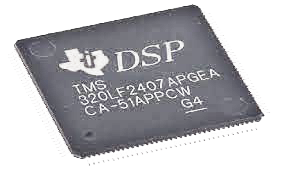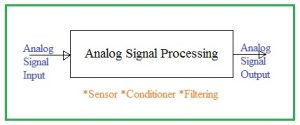
DSP vs. ASP: Which One is Better, DSP or ASP?
August 15 2023  2502
2502
Inquiry
Global electronic component supplier AMPHEO PTY LTD: Rich inventory for one-stop shopping. Inquire easily, and receive fast, customized solutions and quotes.
QUICK RFQ
ADD TO RFQ LIST
Digital and analog signal processors are the two primary categories in the field of electronics. Analog signal processors (ASPs) process analog signals, whereas digital signal processors (DSPs) process digital signals.
What is a Digital Signal Processor?
A digital signal processor (DSP) is a customized microprocessor chip, with an architecture tailored to the practical requirements of digital signal processing. On MOS integrated circuit devices, DSPs are produced.They are frequently utilized in high-definition television (HDTV) products, mobile phones, disk drives, telecommunications, digital image processing, radar, sonar, and speech recognition systems. A DSP's primary function is often to measure, filter, or compress continuous, analog signals from real-world sources. Although most general-purpose microprocessors are capable of properly executing digital signal processing algorithms, they might not be able to handle continuous real-time processing. Additionally, due to limitations on power usage, dedicated DSPs typically have superior power efficiency, making them more suitable in portable devices like mobile phones.DSPs frequently have specialized memory structures that provide the simultaneous retrieval of many pieces of data or instructions.
DSP Features
- Carry the data, but these signals are discrete rather than continuous.
- The signals in digital waves are specified for a specific amount of time. A subset of analog signals includes all discrete time signals.
- A digital wave will also appear smooth and continuous when viewed from a distance, but up close, the minuscule discrete steps can be observed.
- For each short range of a digital wave, there might only be finite values and infinite points for any two points.
- Therefore, only a small range of values, namely 0 and 1, may be used to encode digital signals. They transport binary-formatted data.
- The fundamental reason digital signals are utilized in communication is that noise has very little of an effect on quality.
- Digital signals lose strength as they travel and can be enhanced by means of digital regenerators. With no noise interference, the digital waves that are created again can be of higher quality.
What is an Analog Signal Processor?
Analog signal processing is a sort of signal processing carried out on continuous analog signals using analog methods. "Analog" refers to something that can be mathematically expressed as a collection of continuous values. This contrasts with "digital," which represents signal using a number of distinct quantities. Around electronic device components, analog values are often expressed as a voltage, electric current, or electric charge. Any error or noise that affects these physical quantities will cause a corresponding error in the signals that these physical quantities represent. Crossover filters in speakers, volume, bass, treble, and tint controls on TVs and stereos are a few examples of analog signal processing. As passive components, capacitors, resistors, and inductors, as well as transistors or opamps as active components, are frequently used in analog processing.
ASP Features
- Since it is a continuous signal, a particular time period can include an endless number of values.
- They can be measured in terms of frequency or amplitude across time.
- Analog signals deteriorate with distance. As a result of the interferences' high noise output, the transmission quality degrades during transmission.
- Use of short, twisted signal lines is one easy way to reduce noise interference. Electric equipment should be maintained away from the wires, as should other electric devices. Noise on the two wires can be reduced by using differential inputs.
- Amplifiers can boost analog signals, but they can make noise more intense.
- Signals in the actual world are all analog.
- Analog signals are used to represent the colors we see, the sounds we hear and make, and the heat we experience. The nature of temperature, sound, velocity, and pressure is analogous.
- Analog signals are recorded using an analog recording technology. These audio signals can be recorded and afterwards played back on a record.
- Examples of an electronic technology are wire and tape recording. In this technique, the signals are directly recorded in the medium as variations in the magnetic field strength of a magnetic record or as physical textures on a phonograph record.
Video related to DSP vs. ASP
Advantages and disadvantages of DSPs
Advantages of DSPs- Cheaper in comparison to an analog counterpart.
- Only code or a DSP program needs to be flashed when changes are made in accordance with requirements, making configuration relatively simple. An analog signal is challenging to reconfigure.
- Different interface types that the DSP supports, such UART and I2C, assist in connecting it to other integrated circuits.
- Digital circuits are less susceptible to a component value tolerance.
- Digital signals can be processed offline, making DSP portable.
- Analog data cannot be processed by modern computers; hence, digitalization is required.
- Enables the long-distance transmission of signals.
- DSP consume less bandwidth, allowing you to pack more data into the same amount of room.
- Multidirectional transmission is made possible by DSP relatively quickly.
- DSP makes it simple to implement algorithms for mathematical processing.
- The operation of DSP is primarily dependent on software because, in general, all applications require standard hardware.
- In comparison to ASP, DSP is more expensive for small applications.
- For the same information to be transmitted as ASP, DSP needs more bandwidth.
- Although it is possible to increase the bit rate past a certain point, it is also possible to reduce the amount of data.
- In contrast to ASP, the detection of digital signals necessitates the synchronization of the communication system.
- DSP requires ADC and DAC modules because it needs an anti-aliasing filter prior to the ADC and a reconstruction filter following the DAC.
- DSP wastes more power than ASP since it processes signals more quickly and has more internal hardware resources overall.
- DSP chips are highly expensive, so it's important to pick the right ICs for the job.
- Each DSP has a unique hardware design and set of software instructions, necessitating special DSP programming knowledge. Therefore, the equipment can only be worked on by highly qualified engineers.
- Since a typical DSP chip has more than 4 lakh transistors, DSP has a higher power dissipation rate.
Advantages and disadvantages of ASPs
Advantages of ASPs- Processing is simpler.
- For transmitting audio and video, analog signals work best.
- It is portable and costs coffee.
- It has a greater density.
- Less bandwidth is required than for digital sounds.
- It gives a sound a more exact portrayal.
- It makes a sound that is really natural.
- Its bandwidth is less.
- It is not necessary to look for a new graphics board while using Analog Signals.
- The optical pulse for storing, processing, and sending information is represented by the binary digits 0 and 1.
- Synchronizing analog sound is really challenging.
- Quality clearly suffers.
- Analog signals can have damaged data.
- Compared to digital, analog signals typically have inferior quality.
- The cables are susceptible to outside factors.
- Analog wire is costly and cumbersome to move around.
- Poor multi-user interfaces are available.
- There aren't many models with digital interfaces available in this.
- If the tape is damaged, recording analog sound on it is somewhat expensive.
- The fact that digital sounds can "cut" an analog acoustic wave shows that there is no such thing as an ideal sound reproduction.
Examples of DSP and ASP
DSP (Digital Signal Processing) Examples- Digital audio players: DSP is used in digital audio players to process audio signals. Filtering, equalization, and noise reduction fall under this category.
- Applications for image processing: DSP is used in picture editing applications to process photos. This covers operations like edge recognition, sharpening, and noise reduction.
- Networks for communication: DSP is used to regulate the signals in these networks. This covers activities including error correction, modulation, and demodulation.
- Control systems: The signals in control systems are controlled by DSP. This comprises activities like stabilization, optimization, and feedback control.
- Medical imaging: DSP is employed in the processing of medical pictures. This covers procedures including MRI, CT, and ultrasound scans.
- Analog audio amplifiers: The sound signal in analog audio amplifiers is amplified using ASP.
- Analog video recorders: Recording video signals in analog video recorders requires the usage of ASP.
- Analog cellular phones: Cellular devices that use analog technology: ASP is used to transmit voice signals in analog mobile devices.
- Radar systems: In radar systems, ASP is used to process radar signals.
- Sonar systems: In sonar systems, ASP is used to process sonar signals.
Which One is Better, DSP or ASP?
So, which one—DSP or ASP—is superior? The exact application will determine the response. DSP is a better option if precision and flexibility are needed. ASP is a preferable option if speed, efficiency, and simplicity are priorities. DSP is increasingly the preferred option for signal processing applications in general. This is due to the fact that DSP has several benefits over ASP, such as greater accuracy, flexibility, cost-effectiveness, and size. For some applications, such as those that demand real-time processing or where simplicity and power efficiency are crucial, ASP is still a feasible choice.Conclusion
There are two different approaches for signal processing: DSP and ASP. Over ASP, DSP has a variety of benefits, including greater precision, adaptability, cost-effectiveness, and compactness. For some applications, such as those that demand real-time processing or where simplicity and power efficiency are crucial, ASP is still a feasible choice. The ideal option for a given application will vary depending on its particular needs. It is a good idea to seek advice from a signal processing specialist if you are unclear of which strategy is ideal for your application.Populer Posts
5SGXEA5K1F40C1G
Intel
5SGXMBBR1H43C2LG
Intel
T20F324I4
Efinix, Inc.
1ST250EU2F50I2VGAS
Intel
EP4CGX22CF19I7N
Intel
10AX115H2F34I2LG
Intel
LFMXO5-25-7BBG256C
Lattice Semiconductor Corporation
A1460A-2TQ176I
Actel
A3P1000-FG144M
Microchip Technology
XC3190-PP175CPH
AMD
EP2AGX125EF35I5N
Intel
AGL1000V2-FG484I
Microchip Technology
